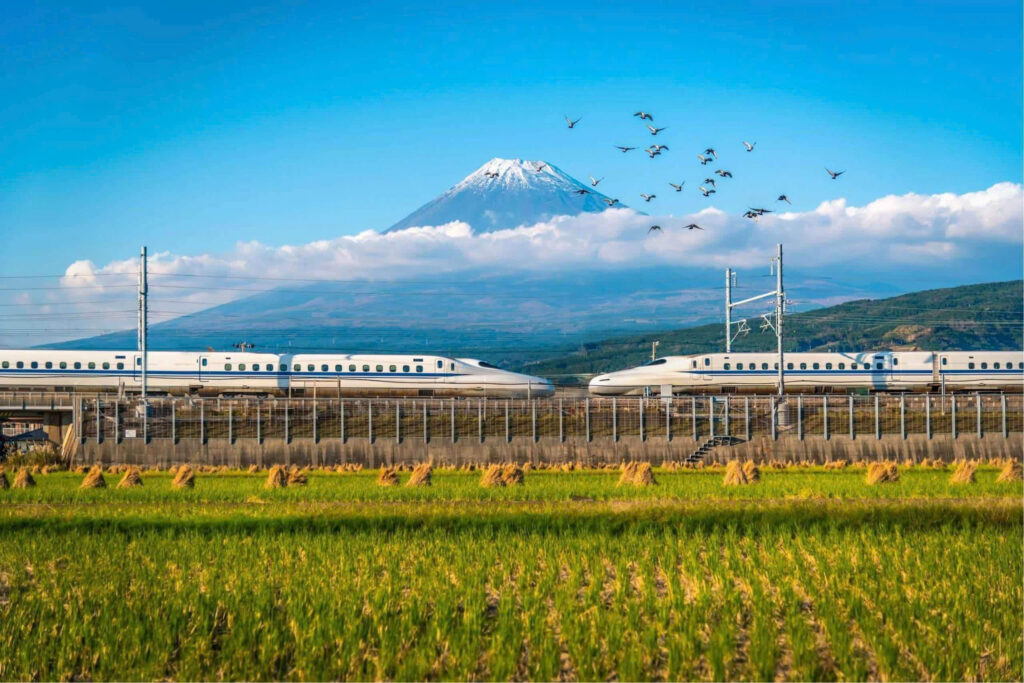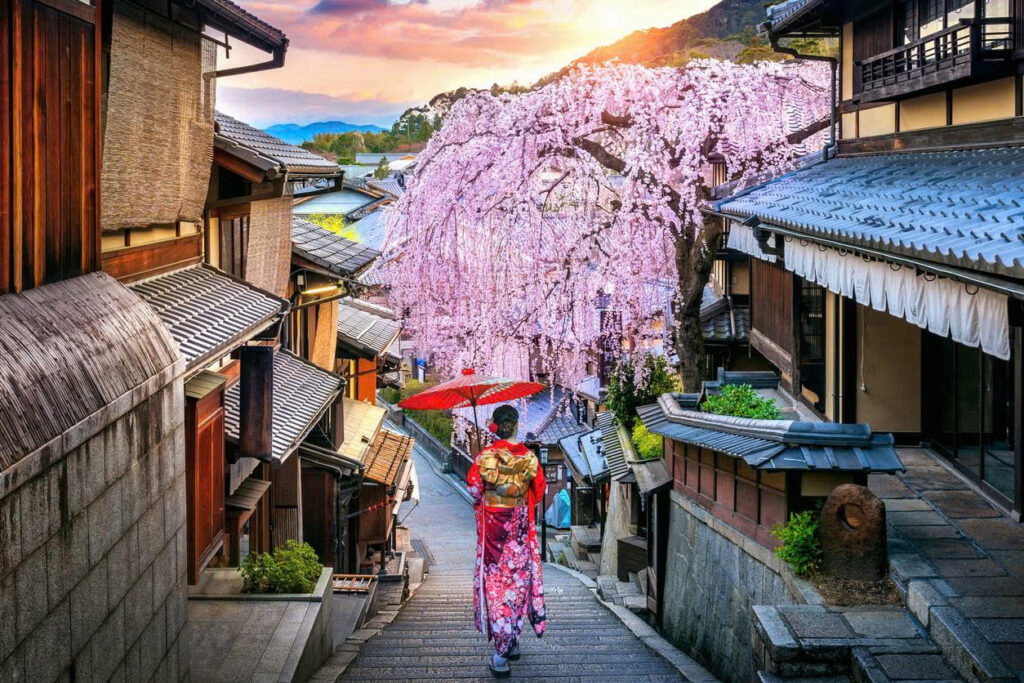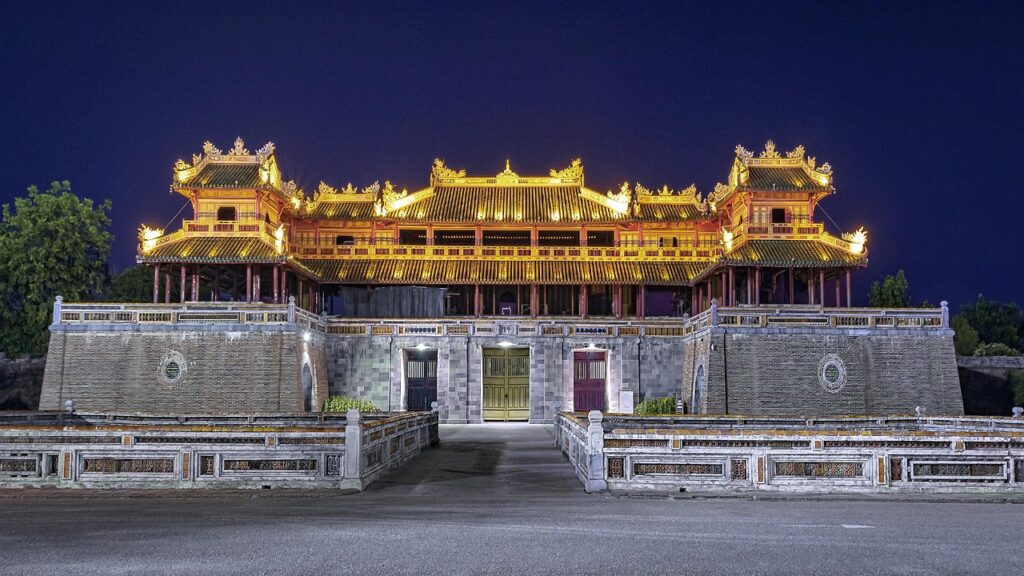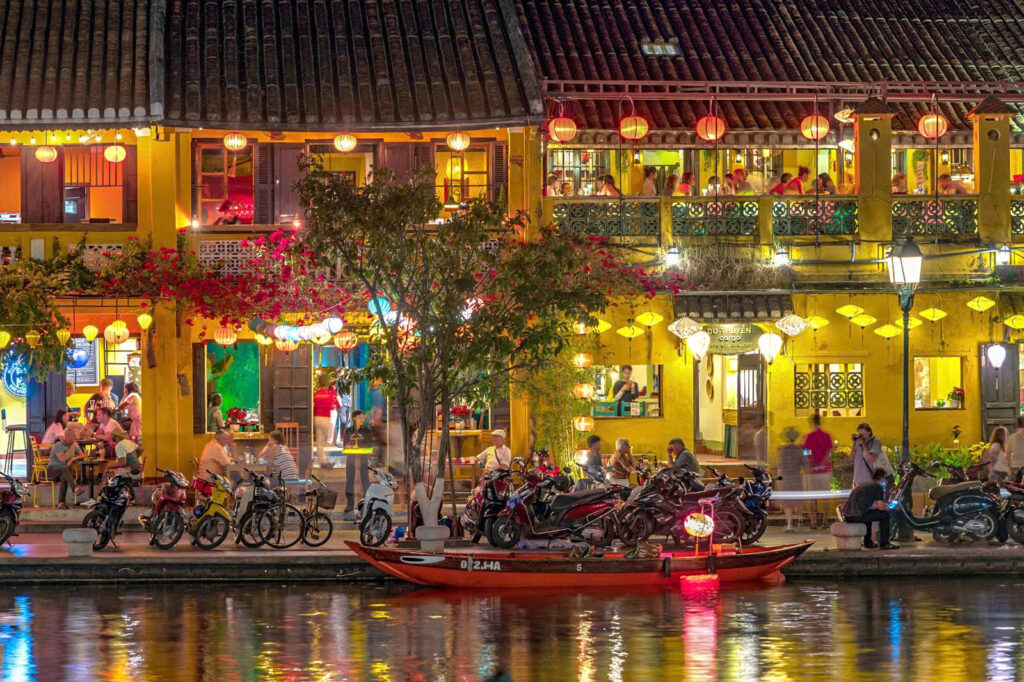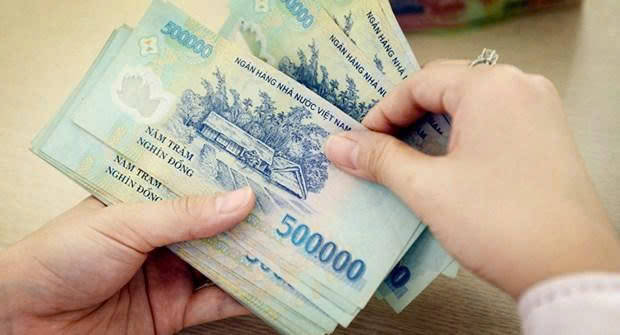Traveling across Japan by train is not just a mode of transport; it’s an integral part of the Japanese experience. Renowned for its efficiency, punctuality, and comfort, Japan’s railway network offers an unparalleled way to explore this diverse country. This comprehensive guide will equip you with everything you need to know about navigating Japan by rail, from understanding different train types to mastering ticket purchases and essential etiquette.
Why Choose Train Travel in Japan?
Japan’s train system is celebrated globally for numerous reasons, making it the preferred choice for many travelers:
- Speed and Efficiency: The Shinkansen (bullet train) can whisk you between major cities in record time, offering breathtaking scenic views along the way.
- Punctuality: Japanese trains are legendary for their adherence to schedules, ensuring your itinerary runs smoothly.
- Comfort: Modern trains offer comfortable seating, ample legroom, and amenities, even in standard cars.
- Extensive Network: The Japan Rail (JR) network and various private lines connect virtually every corner of the country, from bustling metropolises to serene rural areas.
- Safety: Japan’s railway system maintains exceptionally high safety standards.
- Environmental Friendliness: Train travel is a more sustainable way to explore, reducing your carbon footprint.
Understanding Japan’s Train Categories
Japan’s railway system comprises several types of trains, each designed for different travel needs. Knowing the distinctions will help you plan your journey effectively.
1. Shinkansen (Bullet Train)

The backbone of long-distance travel, the Shinkansen is Japan’s high-speed rail network.
- Speed: Travels at up to 320 km/h.
- Routes: Connects major cities like Tokyo, Kyoto, Osaka, Hiroshima, and Fukuoka.
- Car Types: Offers both Ordinary Car (standard class) and Green Car (first class, more spacious seats). Some lines also feature Gran Class for ultimate luxury.
- Reservation: Reservations are highly recommended, especially during peak seasons. You can purchase reserved seats or use non-reserved cars, although the latter can get crowded.
2. Limited Express (Tokkyu)
These trains offer fewer stops than local or rapid trains, connecting regional cities efficiently. They are faster than local trains but slower than the Shinkansen, often requiring a separate limited express fee in addition to the basic fare.
3. Rapid (Kaisoku)
Rapid trains skip some local stops, making them quicker for inter-city travel within a region or for commuting. They typically do not require an additional express fee.
4. Local (Futsū)
Local trains stop at every station, perfect for short distances, exploring specific neighborhoods, or connecting to smaller towns. They are the slowest but often the most cost-effective for short journeys.
5. Private Railways & Subways
In major cities like Tokyo, Osaka, and Kyoto, numerous private railway lines (e.g., Keio, Odakyu, Tobu) and subway systems complement the JR lines. These are crucial for inner-city travel and often connect to tourist attractions not directly served by JR. Your Japan Rail Pass generally does not cover private lines or most subways, but IC cards work across all systems.
Mastering Train Tickets and Passes
Navigating the various ticket options can seem daunting, but it’s straightforward once you understand the system.
1. Japan Rail Pass (JR Pass)

The Japan Rail Pass is a highly popular option for tourists planning extensive travel across Japan.
- Eligibility: Generally available only to foreign tourists with a “Temporary Visitor” visa stamp.
- Validity: Offers unlimited travel on most JR trains (including Shinkansen, with some exceptions like Nozomi and Mizuho trains on the Tokaido/Sanyo Shinkansen lines), JR buses, and some JR ferries.
- Types: Available for 7, 14, or 21 consecutive days, and in Ordinary or Green Car versions.
- Is it worth it? The JR Pass is typically cost-effective if you plan multiple long-distance journeys, e.g., Tokyo to Kyoto and then to Hiroshima. Use online calculators like Japan Guide’s JR Pass Calculator or HyperDia to compare costs.
- Purchase: Must usually be purchased before arriving in Japan, then exchanged for the actual pass at a JR Exchange Office (e.g., at major airports or train stations) upon arrival.
2. Individual Train Tickets
For shorter distances or if the JR Pass isn’t cost-effective for your itinerary, individual tickets are easy to buy.
- Ticket Machines: Most convenient for short-distance travel. Machines have English language options. Simply select your destination or fare, insert money, and take your ticket.
- Ticket Counters (Midori no Madoguchi / Green Window): For long-distance Shinkansen tickets, seat reservations, or if you need assistance, visit a staffed counter at JR stations. Writing down your destination, desired time, and train name can help overcome language barriers.
- Online/App Reservations: Services like SmartEX (for Tokaido/Sanyo Shinkansen) and JR-EAST Train Reservation allow online booking and seat selection for some routes, which can be convenient.
3. IC Cards (Suica, Pasmo, Icoca)
These rechargeable smart cards are indispensable for convenient travel on local trains, subways, and buses in major cities.
- Convenience: Simply tap in and out at ticket gates. No need to buy individual tickets for each ride.
- Regional Differences: While Suica (Tokyo) and Pasmo (Tokyo) are common, Icoca is used in the Kansai region. However, most IC cards are now interoperable nationwide.
- Purchase: Available at ticket machines or manned counters at train stations. Some airports offer special tourist versions like Welcome Suica or Pasmo Passport.
- Beyond Transport: IC cards can also be used for purchases at convenience stores, vending machines, and some shops.
Check out: 15 Must-Do Things in Tokyo: Plan Your Unforgettable Trip
Essential Tips for Train Travel in Japan
Once you have your tickets sorted, here are some practical tips to ensure a smooth journey:
1. Utilize Navigation Apps
- Google Maps: Extremely reliable for public transport in Japan, providing real-time schedules, platform numbers, and fare estimates.
- Japan Transit Planner / NAVITIME: Specialized apps offering detailed route searches, including specific train types, transfers, and even platform numbers. They can also help calculate JR Pass validity.
- HyperDia: A powerful website for detailed train schedules, including train names, departure/arrival times, and fare breakdowns.
2. Understand Train Etiquette
Japanese train etiquette prioritizes consideration for fellow passengers.
- Quiet Carriages: Maintain a low voice when speaking on the phone or to companions. On Shinkansen and some Limited Express trains, there are often “quiet cars” where talking is discouraged.
- Phone Use: Set your phone to silent mode. Avoid talking on the phone in train cars; if you must, move to the vestibule between cars.
- Eating and Drinking: Generally acceptable on long-distance trains (like Shinkansen) where food and drinks are sold. On local and commuter trains, it’s usually frowned upon.
- Priority Seats: These seats are reserved for the elderly, pregnant women, passengers with disabilities, and those with infants. Offer your seat if someone who needs it more boards.
- Queuing: Form orderly queues at designated platform markings before the train arrives.
3. Managing Your Luggage
- Overhead Racks: Suitable for smaller bags.
- Designated Luggage Areas: On Shinkansen, there are often overhead racks and sometimes small spaces behind the last row of seats. For oversized luggage (total dimensions over 160cm/63 inches), you might need to make a reservation in advance, especially on some Shinkansen lines. Check JR’s oversized luggage rules before you travel.
- Luggage Forwarding Service (Takkyubin): This incredibly convenient service allows you to send your luggage directly from your hotel to your next destination hotel (or even the airport). It’s highly recommended for larger bags, enabling you to travel light on the trains.
4. Reservations are Key for Shinkansen
Even if you have a JR Pass, making seat reservations for Shinkansen and Limited Express trains is highly recommended, especially during peak travel times (public holidays, cherry blossom season, autumn foliage season). You can reserve seats at JR ticket counters or via ticket machines (if eligible with your pass/ticket).
5. Be Mindful of Rush Hour
In major cities like Tokyo and Osaka, commuter trains can get extremely crowded during morning (7:30-9:30 AM) and evening (5:00-7:00 PM) rush hours. If possible, plan your travel to avoid these times for a more comfortable experience.
Beyond the Basics: Advanced Tips for Train Enthusiasts
- Joyful Trains: JR operates special “Joyful Trains” with unique themes (e.g., sake tasting, scenic views) on specific routes. These offer a unique travel experience.
- Regional Passes: Besides the nationwide JR Pass, consider various regional passes (e.g., JR Tokyo Wide Pass, Kansai Thru Pass) if your travel is concentrated in a specific area. These can sometimes offer better value than the full JR Pass for localized itineraries.
- Overnight Trains: For a unique experience, consider an overnight train like the Sunrise Express, though these are limited and popular.
Traveling Japan by train is an adventure in itself. From the lightning-fast Shinkansen connecting vibrant cities to quaint local lines weaving through serene countryside, the railway system offers an unparalleled window into Japan’s diverse landscapes and rich culture. By understanding the different train types, mastering ticketing, and adhering to local etiquette, you’ll embark on a seamless and memorable journey through the Land of the Rising Sun. Enjoy your rail adventure!

